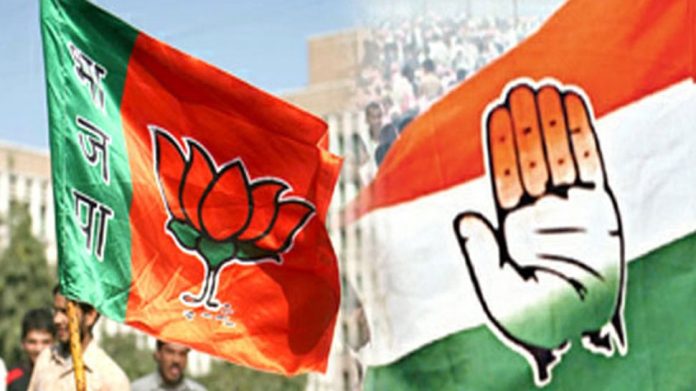- The Indian political scenario has undergone palpable changes in the last decade or so and needs no further elaboration. By any stretch of the imagination, the two main national parties viz. the Bharatiya Janata Party and the Congress can lay claim to being the relevant protagonists at the Centre. Of course, there are regional parties galore spread across the country like the JD(U), SP, TMC, DMK, CPI, CPI(M), Shiv Sena (UBT), and AAP just to name a few who are part of the opposition I.N.D.I.A. alliance formed to take on the might of the BJP. This is apart from the United Progressive Alliance (UPA) fronted by the Grand Old Party. As you are aware, the BJP is fronting the National Democratic Alliance (NDA) completing the national political alliances scenario.

PC: English Jagran
- People keenly invested in the political fortunes of the country would be bewildered by how the wind blows leading to the joining of forces. Call it survival instinct, marriage of convenience, opportunism, and some such encomiums, the political scenario in India is always fascinating to observe the way it makes itself self-sustaining amid turbulent happenstances. Remember, there is no dearth of unanticipated twists and twirls when it comes to forming alliances or jumping from one alliance to another. Just look at how the Chief Minister of Bihar Nitish Kumar has managed to remain in power despite changing alliances any number of times. The moot point to ponder over here is whether the regional parties continue to hold sway at the Centre in these times.
- Indeed, regional parties may be relevant in some states, but their clout has been reduced considerably in Delhi going by the turn of events in recent times. Note that between 1989 and 2014, regional parties punched above their weight as none of the national parties got a majority. In the 1990s, the Lok Sabha vote share of regional parties more than doubled from the earlier level of 20%. BJP’s Lok Sabha majority in 2014 marked the end of that phase and pushed regional parties to the periphery. BJP emerged as the dominant force in states such as UP and Maharashtra too, leading to an upheaval within regional parties there. Since 2014, two kinds of partnerships have emerged between regional parties and national parties.

PC: Tribune India
- Parties such as YSRCP in Andhra and BJD in Odisha dominate their states and have established an understanding with the BJP. Typically, they extend support to the BJP in Parliament. But in TN and Kerala, regional parties fight elections in alliance with national parties. In TN, regional parties call the shots in an alliance. In Bihar and Maharashtra, the scales are more evenly balanced. The key point here is that the national parties do lean on regional parties to be competitive in electoral contests. Make no mistake, regional parties will matter in 2024. However, it’s unlikely India will see regional chieftains bargain and get hold of prized central ministries as they did earlier. Thus, expect the regional parties to complement the national parties but without enjoying the clout.






